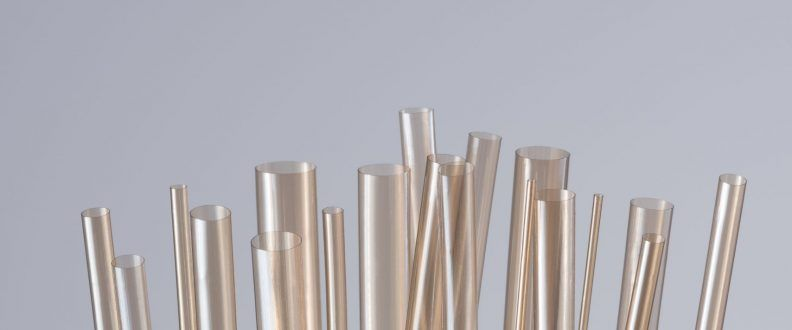What Are Non-Stick PTFE Liners and How Do They Work

Non-stick PTFE liners are thin sheets or coatings crafted from polytetrafluoroethylene (PTFE), a material celebrated for its exceptional properties. PTFE resists heat, chemicals, and wear, making it a cornerstone in modern technology. Its non-stick surface ensures effortless cleaning and maintenance, whether in cookware or industrial applications. Industries like automotive, aerospace, and electronics rely on PTFE for its durability and efficiency. With a global market projected to exceed $4 billion by 2033, these liners continue to revolutionize how you approach convenience and performance in everyday tasks.
Key Takeaways
Non-stick PTFE liners are made from polytetrafluoroethylene, known for its low friction, heat resistance, and chemical stability, making them ideal for various applications.
These liners are biocompatible and safe for medical applications, reducing friction and minimizing the risk of infection in devices like catheters.
When choosing PTFE liners, consider application requirements, material thickness, and chemical resistance to ensure optimal performance.
What Are Non-Stick PTFE Liners?

Overview of PTFE Material
Polytetrafluoroethylene (PTFE) is a synthetic fluoropolymer that stands out for its unique properties. You may recognize it by its popular trade name, Teflon. This material has a remarkably low coefficient of friction, which means it creates an ultra-smooth surface that resists sticking. PTFE also withstands extreme temperatures, ranging from freezing cold to intense heat, without losing its structural integrity. Its chemical resistance ensures it remains unaffected by most acids, bases, and solvents, making it highly versatile.
PTFE’s non-reactive nature makes it safe for use in various industries. For example, it lines pipes and containers to prevent corrosion and contamination. Its biocompatibility allows it to be used in medical devices like catheters, where it reduces friction and minimizes tissue damage. These qualities make PTFE a go-to material for applications requiring durability, safety, and efficiency.
Key Characteristics of Non-Stick PTFE Liners
Non-stick PTFE liners inherit all the exceptional traits of PTFE, making them indispensable in many settings. Here are their key characteristics:
Non-Stick Surface: The low-friction surface ensures that materials, whether sticky or viscous, do not adhere. This feature simplifies cleaning and maintenance, especially in cookware or industrial equipment.
Heat Resistance: These liners can endure extreme temperatures without degrading. Whether you use them in high-heat ovens or freezing environments, they maintain their performance.
Chemical Resistance: PTFE liners resist chemical reactions, making them ideal for handling corrosive substances. They protect surfaces and ensure safe storage or transport of sensitive materials.
Durability: PTFE liners last long, even under heavy use. Their resistance to wear and tear makes them a cost-effective solution for both domestic and industrial applications.
Biocompatibility: In medical applications, PTFE liners provide a smooth, inert surface that reduces the risk of infection and ensures patient safety. Their use in catheters highlights their ability to perform under stringent conditions.
These characteristics make non-stick PTFE liners a reliable choice across industries.
How Do Non-Stick PTFE Liners Work?
Material Properties That Enable Non-Stick Functionality
The unique properties of polytetrafluoroethylene (PTFE) make non-stick PTFE liners highly effective. PTFE’s molecular structure consists of a carbon backbone surrounded by fluorine atoms. This arrangement creates a strong, stable bond that resists interaction with other substances. The result is a surface that materials cannot easily adhere to, giving PTFE its signature non-stick quality.
PTFE also boasts an exceptionally low coefficient of friction. This means objects slide effortlessly across its surface, reducing the likelihood of sticking. Its thermal stability ensures that it performs well under extreme temperatures, whether in a hot oven or a freezing environment. Additionally, PTFE’s chemical resistance protects it from reacting with acids, bases, or solvents, maintaining its integrity in harsh conditions.
Mechanisms Behind Non-Stick Performance
The non-stick performance of PTFE liners stems from both their physical and chemical characteristics. The fluorine atoms in PTFE create a surface that is hydrophobic, meaning it repels water. This property prevents liquids and other substances from spreading or sticking to the liner. Instead, they bead up and slide off, making cleaning effortless.
Another key mechanism is the smoothness of the PTFE surface. The tightly packed molecular structure leaves no room for particles to latch onto, further enhancing its non-stick capabilities. This smooth surface also reduces friction, which minimizes wear and tear over time.
Key Benefits of Non-Stick PTFE Liners
Non-Stick Properties and Easy Maintenance
The hydrophobic nature of PTFE enhances its non-stick capabilities. Water and other liquids bead up and roll off the surface, leaving it dry and clean. This property proves invaluable in environments where hygiene is critical, such as medical applications.
Durability and Resistance to Wear
Non-stick PTFE liners stand out for their exceptional durability. Unlike other materials that degrade over time, PTFE maintains its integrity even under constant use. Its resistance to wear ensures that the liners last longer, making them a cost-effective solution for medical devices applications.
The low-friction surface of PTFE minimizes wear and tear caused by repeated contact or movement. This feature proves especially useful in mechanical applications, where reducing friction extends the lifespan of equipment. Compared to other materials, PTFE liners offer superior resistance to abrasion, ensuring they remain functional and reliable over time.
Chemical and Environmental Resistance
PTFE liners exhibit remarkable chemical resistance, making them suitable for handling corrosive substances. They do not react with most acids, bases, or solvents, ensuring safe storage and transport of sensitive materials.
Environmental factors, such as extreme temperatures or exposure to UV light, do not compromise the performance of PTFE liners. They withstand freezing conditions and high heat without losing their properties. By opting for PTFE liners, you gain a reliable solution that performs well in challenging environments.
Applications of Non-Stick PTFE Liners Across Industries

Medical and Pharmaceutical Industry
The medical and pharmaceutical industry relies heavily on non-stick PTFE liners for their unique properties. These liners are biocompatible, meaning they do not cause allergic reactions in most individuals. Their smooth, low-friction surface plays a critical role in medical devices like catheters. By reducing friction, they minimize tissue damage and lower the risk of infection.
PTFE liners also prove invaluable in pharmaceutical manufacturing. Their chemical resistance ensures that they do not react with sensitive compounds, maintaining the purity of medications. You can find them in equipment used for mixing, storing, or transporting pharmaceutical products. Their non-stick nature prevents residues from clinging to surfaces, simplifying cleaning and ensuring compliance with strict hygiene standards.
How to Choose and Maintain Non-Stick PTFE Liners
Factors to Consider When Choosing PTFE Liners
Selecting the right non-stick PTFE liner ensures optimal performance and longevity. To make an informed decision, you should evaluate several key factors:
Material Thickness
The thickness of the PTFE liner affects its durability and flexibility. Thicker liners provide better wear resistance, making them suitable for heavy-duty applications like industrial machinery. Thinner liners work well in applications requiring precision, such as medical devices like catheters.Size and Configuration
PTFE liners come in various sizes and shapes to meet different needs. For instance, PTFE-lined pipes are available in custom configurations for chemical and pharmaceutical industries. Ensure the liner fits your equipment or application perfectly to avoid performance issues.Chemical Resistance
If your application involves exposure to corrosive substances, choose a liner with high chemical resistance. High-quality PTFE liners excel in handling acids, bases, and solvents, ensuring safe and efficient operation.Manufacturer Reputation
Opt for liners from trusted manufacturers. Companies like AccuPath Group Co., Ltd. offer precision-engineered PTFE liners designed for durability and superior performance across industries. A reliable supplier ensures you receive a product that meets your expectations.
By carefully assessing these factors, you can select a PTFE liner that aligns with your specific needs and delivers long-lasting results.
Non-stick PTFE liners offer a blend of durability, efficiency, and versatility that makes them essential across industries. Their non-stick properties, heat resistance, and chemical stability ensure reliable performance in demanding environments. You can find them in medical devices, where they simplify processes and enhance productivity. Whether you need a solution for manufacturing, or medical applications, PTFE liners deliver unmatched convenience and performance. Consider incorporating them into your tasks to experience their long-term benefits firsthand.
See Also
Exploring The Role Of PTFE Etched Liners In Catheters
Tips For Selecting The Ideal PTFE Etched Liner
The Importance Of PTFE Etched Liners In Catheter Reinforcement

